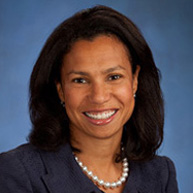 Triinu Magi, Co-Founder and CTO of Neura, a company leading the trend on the Internet of Things, has always believed in paving her own path. Growing up in Estonia, Magi was instilled early on with the idea that everyone had the opportunity to create their own successful future. This mentality and entrepreneurial work ethic has shaped Magi throughout her professional development.
Triinu Magi, Co-Founder and CTO of Neura, a company leading the trend on the Internet of Things, has always believed in paving her own path. Growing up in Estonia, Magi was instilled early on with the idea that everyone had the opportunity to create their own successful future. This mentality and entrepreneurial work ethic has shaped Magi throughout her professional development.
“This established the foundation that made me the leader I am today,” said Magi.
Drawn to Innovation
Magi entered the workforce at the young age of nineteen and she noted that in every role she held, innovation and technology were always two key focal points. Before she branched out on her own to create Neura, Magi spent over fifteen years working in various computer and network security related positions.
During the period when Estonia was establishing their independence from Russia, Magi played a key role in developing the Estonian e-government services and she was instrumental in creating an independent security analysis for Estonia’s e-voting system. Later in her career, Magi worked in research and innovation for Israel’s RSA Security.
“Without these experiences, I would not be able to hold the role I do at Neura. I consider each of these roles to have been stepping stones that have led me to where I am today,” said Magi. “I definitely feel like I was in the right place at the right time,” added Magi.
While Magi acknowledges the part that her previous roles have played in her success, she is proud of the fact that she had the courage to follow her passion and her heart by forming her own company. “I encourage every woman to follow their passions by doing what they love,” said Magi, “and this will involve a lot of hard work, but in the end it will be extremely rewarding.”
Magi has always gravitated toward innovation throughout her career, which is why it is no surprise that she started Neura one year ago. “We are excited about the work we are doing with the Internet of Things and exploring the interconnectivity of technology that will ultimately make our digital experiences more personalized and more human,” Magi explained.
She continued, “I believe that Neura will be the solution that enables the Internet of Things movement to provide trustful, intelligent and adaptive services to connected devices’ users. This is the future of technology, bringing intelligence to connected ecosystems, and we’re very excited to be a part of it.”
Women in Technology
“Do whatever it is you love to do,” advised Magi. According to Magi, women need to be careful not to create their own barriers by self-selecting out of opportunities. “By doubting our abilities and lacking confidence, we enable the negative stereotypes that surround women in technology,” said Magi.









